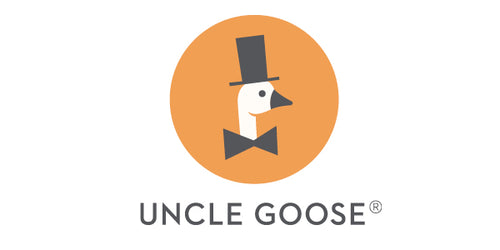
What’s the difference between a Cow and an Ox?
On February 12, 2021, we celebrate the lunar new year. This is the Year of the Ox. You’ll find all the animals of the Chinese zodiac — and 20 others! — on our 32 block Chinese set.
So of course you’ll see a hand-crafted illustration of an ox on Uncle Goose Chinese blocks. The brush-stroke ox illustration is paired with niú — the Chinese word for ox.
On the flip side of this block, you’ll also see a Mandarin Chinese character representing the word for “ox.” The English translation is right beneath this character.
Now, take a look at our English alphabet set. Instead of an ox, you’ll see an illustration of a cow. And you’ll also see the word “cow” printed beneath the illustration.
So what’s the difference between an ox and a cow?
First, let’s start with what the two have in common. They’re both bovines, which means they share the same biological subfamily. They’re both cattle.
That’s all they have in common. Now let’s dive into the differences.
In the English language, the distinction between a cow and an ox comes down how each animal is used by humans. Humans primarily use a cow for milk and reproduction; while we chiefly see an ox as a draft animal.
A draft animal is a beast that pulls heavy loads. In other words, an ox does hard manual labor. But a cow? A cow gives milk and has babies.
And unlike most other animals, English-speakers don’t have one unique word for an individual in a herd of cattle. Instead, we use all kinds of words to refer to individuals.
A female is cow. A castrated male is a steer. A male is a bull. And an ox can be any of the above, although most usually, it’s a castrated male.
But wait! We have even more English words for individual cattle. A young female who hasn’t given birth is a heifer. And any baby is a calf.
And while we have all kinds of words for the individual bovines in a herd, we most often call them “cows.” We even have a tendency to call a herd of cattle “cows."
English-speaking people most often use word “cow” to refer to an individual in a herd of cattle. Common usage: that’s why your Uncle Goose uses an illustration of a cow on our Classic ABC Blocks.
You’ll also see a cow illustration and translation on many of the European language sets, as well. That’s because many European languages have the same issue of a non-singular word for cattle.
However, Mandarin Chinese doesn’t have any of the problems English-speakers have with the singular word for cattle. Mandarin Chinese uses a common singular form for an individual in a herd.
The Chinese use the word "niú" to refer to Ox. This word accurately describes not just oxen, but also cows, bulls, steers, heifers, and more.
Further, using the word for “ox” is a tradition. After all, the Chinese call this year “The Year of the Ox.”
Your Uncle Goose made sure to celebrate this distinction. So whether you say niú, cow, bull, heifer, steer, calf, or ox — Happy Moo Year from your Uncle Goose! OX OX OX!



